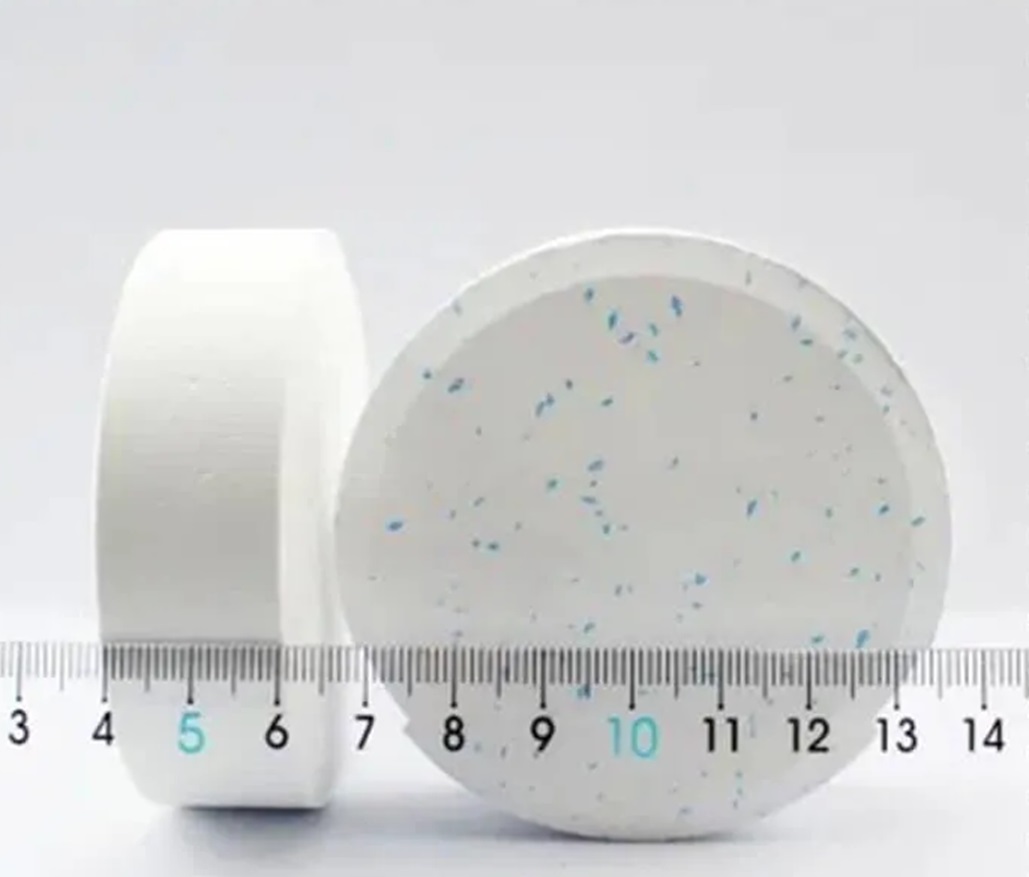We unleash your business potential by maximize the business innovation.
Send EmailTrichloro Isocyanuric Acid, Trichloroisocyanuric Acid, TCCA, 87-90-1
Chemical Identity
-
Full Name: Trichloroisocyanuric Acid
-
CAS Number: 87-90-1
-
Molecular Formula: C₃Cl₃N₃O₃
-
Molar Mass: 232.41 g/mol
-
Appearance: White crystalline powder or tablets with a strong chlorine odor
-
Solubility: Slightly soluble in water (~1.2 g/100 mL at 25 °C)
-
pH (1% solution): 2.0–2.7
🏭 Applications
-
Swimming Pools: Primary disinfectant and algae control agent
-
Drinking Water: Used in emergency chlorination and rural sanitation
-
Textile & Paper: Bleaching agent
-
Food Industry: Surface disinfection of fruits and vegetables
-
Animal Husbandry & Fisheries: Pathogen control in water systems
-
Industrial Water Treatment: Cooling towers, recycled water, and air conditioning systems
⚙️ Chemical Behavior
-
Chlorine Content: ~90% available chlorine
-
Mode of Action: Releases hypochlorous acid (HOCl) upon hydrolysis, a powerful oxidizer
-
Stability: Stable under dry conditions; decomposes in moisture or heat
-
Hazards: Strong oxidizer (UN 2468, Class 5.1); reacts with acids and reducing agents
Trichloroisocyanuric Acid (TCCA):
🧪 Chemical Identity
| Property | Description |
|---|---|
| Chemical Name | Trichloroisocyanuric Acid |
| Other Names | Trichloro-s-triazinetrione, Symclosene, TCICA, TCCA 90 |
| CAS Number | 87-90-1 |
| Molecular Formula | C₃Cl₃N₃O₃ |
| Molar Mass | 232.41 g/mol |
| Appearance | White crystalline powder or tablet |
| Odor | Strong chlorine odor |
| Melting Point | 249–251 °C |
| Density | 2.07 g/cm³ (bulk: ~850 kg/m³) |
| Vapor Pressure | 0.001–0.002 Pa (20–25 °C) |
| pH (1% solution) | 2.0–2.7 (acidic) |
| Water Solubility | ~1.2 g/100 mL at 25 °C |
| Flash Point | 121 °C |
| Stability | Stable when dry; degrades in moisture |
| LogP | –1.31 to –0.94 |
| Sensitivity | Hygroscopic; incompatible with oxidizers/reducers |
| Hazard Class | UN 2468 – Class 5.1 (Oxidizing Substance) |
🏭 Applications
1. Swimming Pool Disinfection
-
Purpose: Controls bacteria, algae, and viruses
-
Form: Tablets, granules, or powder
-
Active Chlorine: ~90%, long-lasting release
-
Target Dose: 1–3 ppm free chlorine
2. Drinking Water Treatment
-
Use: Emergency sanitation and rural disinfection
-
Mode of Action: Hydrolyzes into hypochlorous acid (HOCl)
-
Advantages: Portable, effective against waterborne pathogens
3. Industrial Water Systems
-
Applications: Cooling towers, boilers, and recycled water systems
-
Industries: Textile, paper, petrochemical, food processing
-
Benefits: Reduces biofilm and boosts operational efficiency
4. Surface and Equipment Disinfection
-
Settings: Hospitals, labs, food plants
-
Dilution: 0.5%–1% aqueous solution
-
Contact Time: 10–30 minutes recommended
5. Laundry and Textile Disinfection
-
Sector: Hotels, hospitals, laundries
-
Effect: Kills microbes, acts as a mild bleaching agent
-
Note: Dosing must be controlled to protect fabrics
6. Agriculture and Animal Husbandry
-
Agriculture: Disinfection of irrigation lines, seed sterilization
-
Livestock: Cleaning water systems in barns, poultry, aquaculture
-
Benefit: Disease control, improved yield
7. Organic Synthesis
-
Function: Chlorinating agent in aromatic compound reactions
-
Advantage: Solid, stable, portable alternative to gaseous chlorine
🧪 Chemical Behavior
-
Releases: HOCl upon hydrolysis
-
Oxidizer: Strong, requires careful storage
-
Incompatible with: Acids, ammonia, reducing agents
🔄 Alternatives to TCCA (by Application)
🏊 Pool Water Treatment
| Chemical | Chlorine % | Notes |
|---|---|---|
| SDIC (Sodium Dichloroisocyanurate) | 60–65% | Fast-dissolving, good for shock dosing |
| Calcium Hypochlorite (Ca(ClO)₂) | 65–70% | Strong oxidizer; leaves residue |
| Sodium Hypochlorite (NaOCl) | ~10–15% | Liquid form; unstable under sunlight |
🧪 Organic Synthesis
-
N-Chlorosuccinimide (NCS) – Used for selective chlorination
-
NaOCl + Acid – In-situ HOCl generation (requires ventilation)
🧼 Surface & Food Industry Disinfection
-
Peracetic Acid – Biodegradable, no residue, broad-spectrum
-
Hydrogen Peroxide (H₂O₂) – Eco-friendly, breaks down into H₂O + O₂
🏗️ Industrial Production of TCCA
🔄 Process Flow
-
Raw Materials: Cyanuric acid, chlorine gas, sodium or calcium hydroxide
-
Chlorination: Controlled gas-phase reaction in a packed bed reactor
-
Crystallization: Product is purified and solidified
-
Drying: Moisture removal to ensure storage stability
-
Forming: Processed into tablets, granules, or powder
⚙️ Technologies
-
Continuous countercurrent chlorination systems
-
Reactor material: Titanium alloys for chlorine resistance
-
Chlorine efficiency: <0.97 tons Cl₂ per ton TCCA
-
By-products: Ammonium sulfate, dilute sulfuric acid (can be recovered)
🌱 Environmental & Waste Management
-
Effluent Composition: NaCl, free chlorine, residual cyanuric acid
-
Treatment Methods:
-
Acid hydrolysis → Cyanuric acid recovery
-
Resin adsorption → Removal of trace organics
-
Advanced oxidation + evaporation → Waste minimization and water reuse
-
📛 Alternative Names for TCCA
| Category | Name Variants |
|---|---|
| IUPAC/Synonyms | Trichloro-s-triazinetrione, Trichloro-1,3,5-triazinetrione |
| Common Names | Trichlorocyanuric acid, Chloreal, Neochlor 90, TCICA |
| Commercial Names | Symclosene, ACL 85 / ACL 90 Plus, Fi-Clor 91 |
| Database IDs | NSC-405124, UNII-RL3HK1I66B (FDA/UN code) |
| Turkish Name | Triklor İzosiyanürik Asit |
